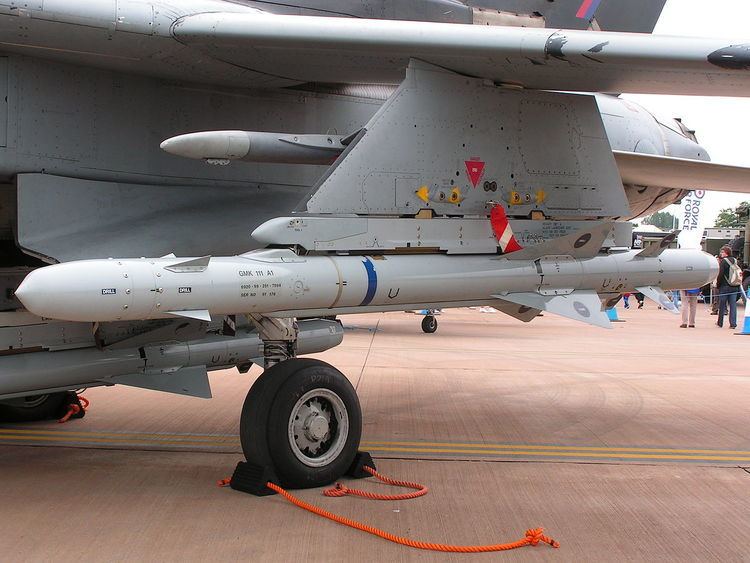In service 1990 | Used by See operators Designed 1982 | |
 | ||
Type Air-to-surface anti-radar missile Wars | ||
ALARM (Air Launched Anti-Radiation Missile) is a British anti-radiation missile designed primarily to destroy enemy radars for the purpose of Suppression of Enemy Air Defense (SEAD). It was used by the RAF and is still used by the Royal Saudi Air Force,. The weapon was retired by the UK at the end of 2013.
Contents
History
The Ministry of Defence received bids for a new anti-radiation missile in late 1982; British Aerospace Dynamics offered ALARM while Texas Instruments teamed with Lucas Aerospace offered its HARM missile. Defence Secretary Michael Heseltine announced the selection of ALARM on 29 July 1983. The initial order was 750 missiles for the RAF. The selection process was controversial; the battle between the contractors was bitter, the Ministry of Defence favoured ALARM to retain UK industrial capabilities while the Treasury favoured the cheaper and proven HARM.
In early 1986, BAe recognised that Royal Ordnance was having difficulties delivering the missile's motor, named Nuthatch, and began to consider alternatives. Royal Ordnance's solution to the required burn-loiter-burn characteristic of the engine was complex. In July 1987, BAe, by then the owner of Royal Ordnance, replaced the Nuthatch motor with a lower risk motor designed by Bayern-Chemie. BAe's GB£200 million contract for the missile was renegotiated with the price increased to GB£400 million and delivery pushed back from 1988 to 1990.
The ALARM missile was officially retired by the UK at the end of 2013, but continued to be used by the Saudis.
Features
ALARM is a fire-and-forget system, with an added loiter capability. In loiter mode, ALARM will, when launched, climb to an altitude of 13 km. If the target radar shuts down, the missile will deploy a parachute and descend slowly until the radar lights up. The missile will then fire a secondary motor to attack the target.
Combat use
ALARM has been used in the following conflicts:
